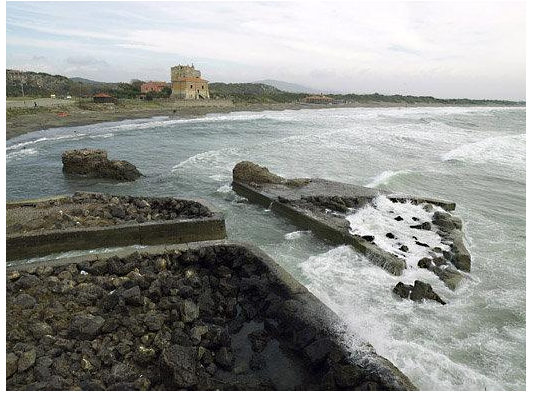Scientists have cracked Rome's secret to waterproof concrete

Explosive stuff ... Volcanic ash, seawater and lime are proving a millennia-defeating mixture
Image: REUTERS/Heinz-Peter Bader
Stay up to date:
Cities and Urbanization
Engineers and architects have always marvelled at the durability and resilience of Roman concrete. Piers built 2,000 years ago endure to this day. Meanwhile, many of our modern harbour structures are already crumbling away.
Now scientists in the United States believe that they may have unlocked the secret to the extraordinarily long life of Roman concrete.
The secret combination
Researchers conducted their research by studying concrete cores from the ancient Roman pier, Portus Cosanus in the Orbetello region of Italy. They discovered that Roman engineers used a mix of volcanic ash, seawater and lime, which set off a chemical reaction that increased cohesion with exposure to seawater, even after the concrete had technically set.

This “pozzolanic reaction” triggered a formation of crystals in the gaps of the concrete. It also helped to prevent cracks from growing within the structure, providing internal reinforcement over time.
The study, published in the journal American Mineralogist, used a new procedure involving high-powered light beam x-rays to penetrate Roman concrete.
Accept our marketing cookies to access this content.
These cookies are currently disabled in your browser.
Modern concrete is made from materials that do not react in the same way when mixed with seawater. However, researchers have observed a similar reaction in naturally occurring cement called “tuffs”, which are found near the foothills of volcanoes. They hypothesize that it was from this that the Romans drew their inspiration.
Practical applications
"I think [the research] opens up a completely new perspective for how concrete can be made," said Dr Marie Jackson, who headed the U.C. Berkeley study.
The research team believe that this Roman know-how could be applied to modern building practices. They hope to reconstruct Roman concrete using seawater from San Francisco Bay and ash from volcanic areas in the western US such as Yellowstone.
In an interview, Jackson told the BBC Radio 4's Today programme that the Roman-style concrete based on volcanic ash would be ideal for the Tidal Lagoon project that is about to start construction in Wales.
"The Roman technique was based on building very massive structures that are really quite environmentally sustainable and very long-lasting," she said. "I think Roman concrete, or a type of it, would be a very good choice for Swansea. That project is going to require 120 years of service life to amortise the investment."
She also expressed concerns that steel columns that are generally installed in such projects are likely to corrode over time, due to exposure to seawater.
Don't miss any update on this topic
Create a free account and access your personalized content collection with our latest publications and analyses.
License and Republishing
World Economic Forum articles may be republished in accordance with the Creative Commons Attribution-NonCommercial-NoDerivatives 4.0 International Public License, and in accordance with our Terms of Use.
The views expressed in this article are those of the author alone and not the World Economic Forum.
Related topics:
Forum Stories newsletter
Bringing you weekly curated insights and analysis on the global issues that matter.
More on Urban TransformationSee all
Luis Antonio Ramirez Garcia
May 9, 2025
Tejashree Joshi
May 8, 2025
Pepe Puchol-Salort and Jaime Barba-Sevillano
May 5, 2025
Don McLean
May 1, 2025
Anu Devi and Sarah Franklin
April 30, 2025





